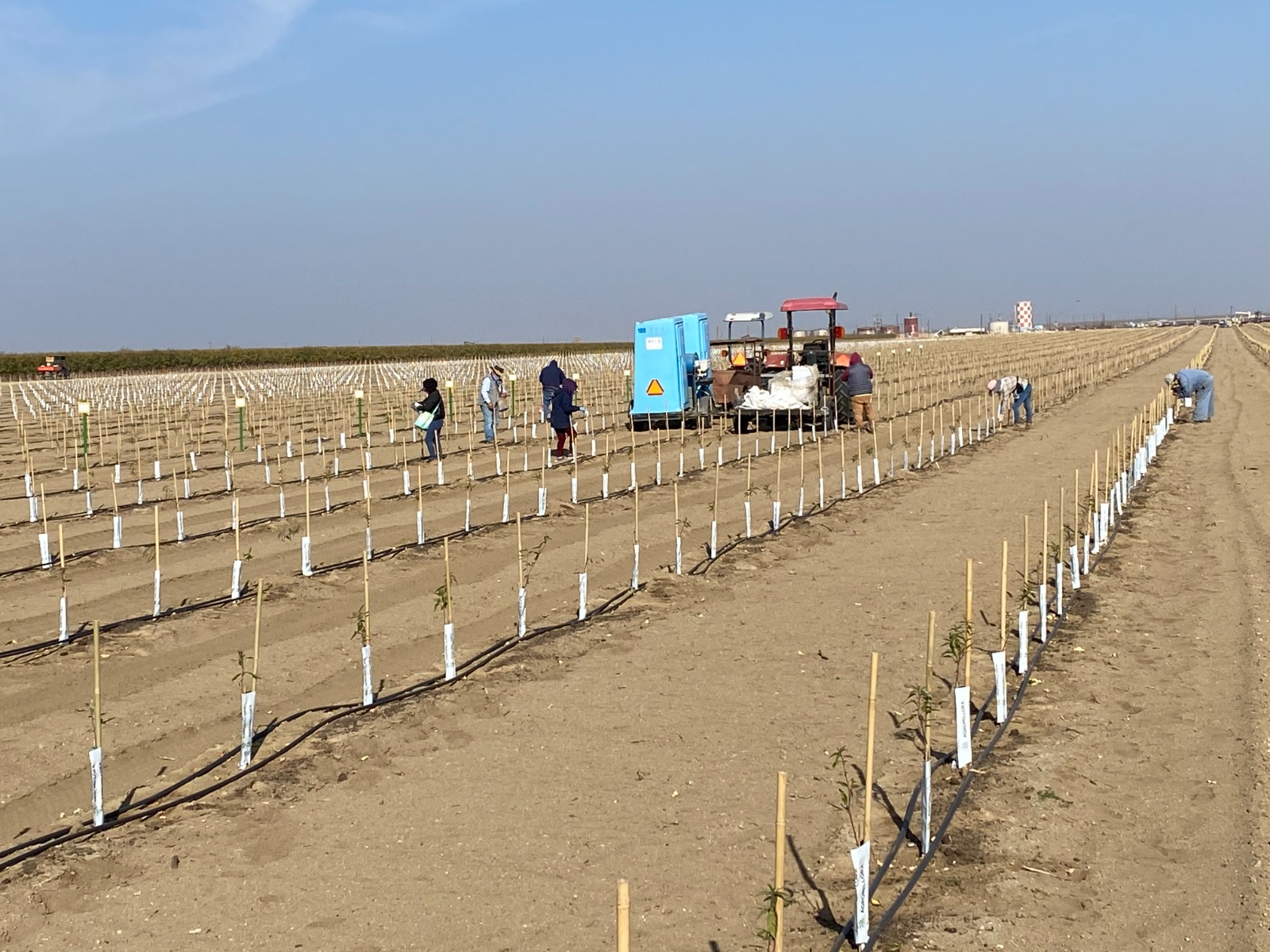
Increasing almond orchard productivity and grower profits is the goal of a research project to redesign orchards using more intensive management systems and new varieties and rootstocks.
In an Almond Board of California research update by Grant Thorp, a research scientist who has studied alternative growing systems for almonds in Australia, Thorp reports that orchard yields can be doubled through high-density plantings with minimal pruning to produce a slender, pyramid-shaped canopy that optimizes light interception.
Currently, Thorp writes in his research, almond trees in production today produce large scaffold branches and large canopies that require pruning to maintain production. Current varieties, he concludes, are not suited to more intensive growing systems with smaller trees. New varieties are required to have growth habits better suited to high-density orchards.
Thorp reported that trials are being conducted in collaboration with Burchell Nursery, UC Davis and CSU Fresno. The trials include several advanced genotypes from the UC Davis and Burchell Nursery breeding programs. Those new genotypes were planted alongside five commercial varieties, Nonpareil, Monterey, Wood Colony, Winters and Shasta. Similar trials are being conducted in Australia.
All trees were planted as unpruned central leader trees and field grown for two years with desirable traits noted in the potential new varieties and the current varieties. Growth habits, including branching, flowering and fruiting patterns, are being studied. Thorp reported that methods and early data from the trials are being shared with almond breeders in California, Australia and Spain.
UC Davis plant geneticist Tom Gradziel, a cooperator in this research project, said the almond industry is evolving toward higher-density orchards for several reasons, including orchard dust reduction, improved water use efficiency, and potential for catch-frame off-ground harvest and higher per-acre yields.
Tree architecture in high density planting is designed to capture more sunlight, which translates into potential for higher yields.
Row spacing could decrease with high-density plantings, Gradziel said. Current spacing is necessary to accommodate traditional field equipment and on-ground drying, but a move to off-ground harvest and new equipment design would allow closer row spacing and increased sunlight capture.
A range of tree training and minimal pruning projects were also part of the research. One of the new concepts being tested in high-density orchards is mechanical hedging to control undesired expansion of scaffold branches. Trials in Australia show that a single round of hedging at the end of the second year’s growth was sufficient to maintain narrow canopies, yet did not reduce yields. This also allowed closer row-to-row planting.
This research was jointly funded by Almond Board of California and Hort Innovation in Australia.
















